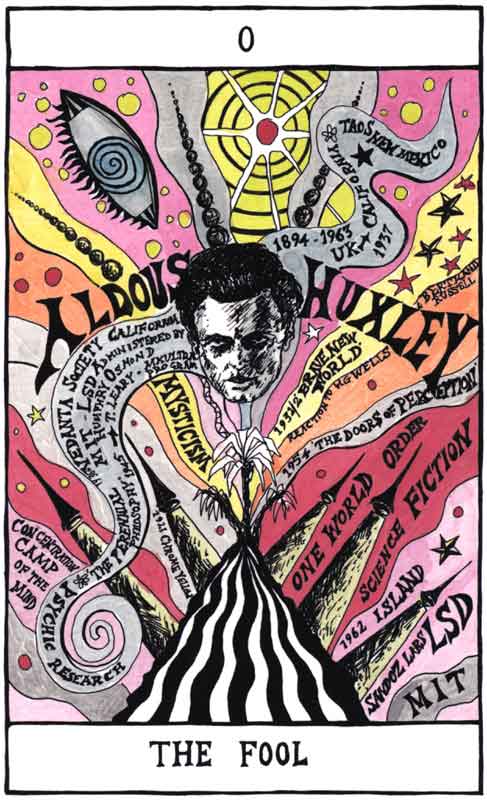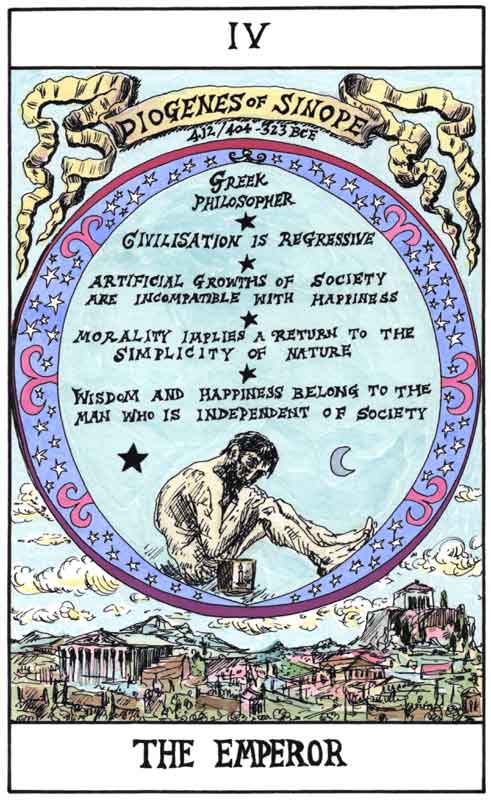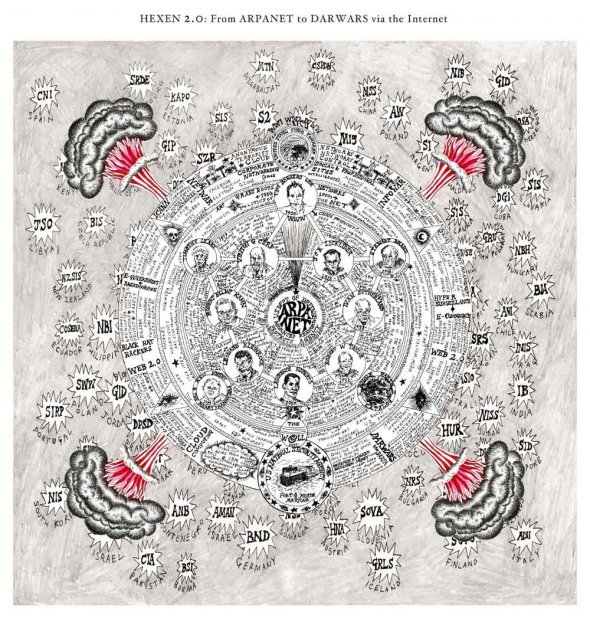Cybernetic Magic
Following two exhibitions of Suzanne Treister’s multimedia project HEXEN2.0 at the Science Museum and Work Gallery this Spring, cybernetic historian Andrew Pickering delves deeper into the work’s dense web of connections, tracing open-ended relationships between militarism and counter-culture, science and sorcery
Suzanne Treister’s HEXEN2.0 is a marvellously rich, suggestive, erudite and important work. It began, she tells us, ‘in the Texan desert in early 2009’, when,
I first observed a possible connection between the mid-twentieth century theories and applications of cybernetics, which arose out of World War Two, primarily in the USA, where they answered a perceived need for a more controlled society, and our current world of online social media and what is referred to as Web2.0. The link was feedback, as in cybernetic feedback loops, with a potential outcome not only of human connectivity and autopoiesis... but also of governmental control.
The material outcome is a set of 78 HEXEN2.0 Tarot cards and a book, both of them beautiful and stylish, and both operating at two levels, images and text. We can take the text first and then the imagery.
The cards are labelled as conventional Tarot cards, but their subject matter and information content is historical. The first, ‘0’, is ‘The Fool’ – none other, here, than Aldous Huxley. The writing that surrounds a sketch of his face includes, amongst other things, ‘1954 The Doors of Perception,’ ‘Vedanta Society California,’ and ‘LSD’ – it tells us what Treister considers most relevant about the man, what he wrote and what he was into. ‘I The Magician’ is Timothy Leary, presented similarly. ‘II The High Priestess,’ is not a person but the Macy Conferences held in the US between 1946 and 1953, in which cybernetics as a distinct field is conventionally held to have been born. Treister lists many of the attendees at the meetings (though not quite all – where is Grey Walter, for instance?) and tells us a little about the background and interdisciplinarity of these meetings (including a statement that the meetings were ‘US government funded,’ though actually the money came from the Josiah Macy Jr Foundation – hence the name). And so on.
The cards are reproduced at a larger scale in the book, which begins with a short introductory essay by Lars Bang Larsen and five new images or maps, ‘historical diagrams, which function as the key to the project’ and which, so to speak, put the Tarot cards in their place, indicating how they can fit into a bigger picture. The bigger picture is, however, by no means straightforward. The maps are dense with text laid out radially, with an all-seeing eye at the centre of the first, surrounded initially by ‘Tavistock Institute CIA,’ ‘Unabomber Manifesto,’ ‘Cybernetics,’ ‘Macy conferences’ and ‘MK Ultra,’ followed by clouds of further information on novelists, philosophers, film-makers and intellectual and political movements. This map is labelled ‘From Diogenes of Sinope to Anarcho-Primitivism and the Unabomber via Science-Fiction.’ The labels of the other maps refer to MKUltra, the counterculture, technogaianism, national socialism, cybernetics and the Macys again, neo-totalitarianism, the computer, the Antikithera mechanism, quantum telepathology, Arpanet, Darwars and the internet. We get the idea, even if we aren’t quite sure what the Antikithera mechanism and MKUltra were without reading the cards (an ancient Greek mechanical computing device and a CIA mind-control programme respectively).
Treister also insists that these maps are not independent, with many people and institutions appearing in more than one. So Larsen is right to begin his introductory essay with a quote from Thomas Pynchon’s Gravity’s Rainbow – in Treister’s historical vision, connections proliferate in surprising and disturbing ways, which is one of the great strengths of her work. But a certain simplification is possible and might help in interpreting her work. HEXEN2.0 echoes and amplifies Donna Haraway’s famous ‘Manifesto for Cyborgs.’ Haraway was drawn to the ambiguity of the figure of the cyborg (the cybernetic organism). Lacking any essence, with no ideal form given by God in the Garden of Eden, the cyborg could become anything. So cyborgs might have been born in the belly of the military-industrial beast in WWII, but that doesn’t mean we should give up on them. We should instead be intensely interested in cyborg becomings – in how they/we might evolve in personally and politically promising ways. And seen from that angle, Treister offers us her own historically grounded vision of how these two threads have evolved to the present: the dark side (the Five of Swords, for example, a splendidly sinister card for Google: ‘entire web stored in Google database – online domination – total control – cooperation with governments and CIA – files on world population’s genetic data’) and the light (try, well, the Two of Chalices: The Summer of Love, which also gets you flowerpower and the civil rights movement).

Image: Suzanne Treister, HEXEN2.0 Tarot: 0 The Fool, Aldous Huxley, 2009-11
So Treister is doing a Haraway: showing us the centrality of cybernetics to postwar history and how it fits into both hopeful and depressing elements of the present. And this is important. Philosophers and artists have an engrained habit of condemning cybernetics as a loathesome science of control, but HEXEN2.0 can help us find the antithesis of control, too – an experimental openness to the world – if we pick the right threads. (And here I should declare an interest as the author of The Cybernetic Brain: Sketches of Another Future, a book that encourages the reader to do just that. I also think of Fred Turner’s From the Counterculture to Cyberculture as more or less in the same space.) Treister wants readers to plunge in and make their own routes into the future: HEXEN2.0 is an intensely and promisingly political history of science, technology and organisations.
So much for the text; what about the pictures? What’s going on with those Tarot cards? Who knows, but here is a reading. ‘Hexen’ means witchcraft. Tarot is premodern. It does not belong to the modern scientific vision of the world as orderly, knowable, linear. It belongs instead to a world where hidden sympathies hide beneath the surface, arcana, affinities that always wait to be explored further. Her five overall maps especially remind me of the frontispieces of obscure alchemical and Paracelsian tomes that connect names, substances, planets and magi together in combinations that we should meditate upon. History is like that, it is not like the univocal chains of cause and effect that historians and sociologists like to offer us, is how I read Treister’s (and Pynchon’s) message. This is also the historiographical message from the bright side of cybernetics: the cyberneticians themselves understood the world as ultimately unknowable, always becoming something new in a brutally emergent and unpredictable fashion.
And, of course, the Tarot gives this a nice performative as well as iconographic twist. The invitation of the cards is to do a reading with them. Deal them out, put them in a pattern and open your mind to what emerges – a brilliant way of actively engaging people in dense historical and political reflection. I have to say, alas, this did not do a lot for me, probably because I knew too much already. The most striking outcome was that the first card I turned over was the King of Chalices, the founder of management cybernetics, my man Stafford Beer, about whom I have, as it happens, written extensively. Treister is quite right to include him in her pantheon as a representative of the bright side, ‘part of a radical British tendency within cybernetics of “anti-control”’, and she picks up many of the right topics, running from Beer’s truly amazing biological computing project in the late 1950s, which aimed to entrain pond ecosystems as managers of factories, up to Project Cybersyn in Chile, which aimed at cybernetic management of the entire economy until it was cut off by the Pinochet Coup and the participants fled or were imprisoned. But I have to say that I was left with the feeling that a citation to my own work would have been nice here, and no doubt I will not be the last historian to feel that way.)

Image: Suzanne Treister, HEXEN2.0: IV The Emperor, Diogenes of Sinope, 2009-11
One last thought. HEXEN2.0 traces out a fascinating tangled web of historical interconnections, but it is interesting to note where Treister draws the line, where the connections stop. Stafford Beer’s card includes ‘cybernetics and spirituality’ as a single item amongst many, but Treister hardly hints at the powerful current of non-standard spiritualities that runs together with many of the threads she represents: Beer taught Tantric yoga; Ross Ashby embraced spiritualism and declared himself a ‘time-worshipper’; Huxley’s affiliations with the East are well known as, perhaps, are Gregory Bateson’s. And none of this is irrelevant to their lives and work. Larsen’s essay is right in its title to refer to Treister’s ‘Radical Enlightenment.’ If the Tarot gestures back to a nonmodern ontology, this de-spiritualised history of cybernetics remains modern in this sense, more an echo of Haraway and Marx than Paracelsus.
Andrew Pickering <a.r.pickering AT exeter.ac.uk> is professor of sociology and philosophy at the University of Exeter. With PhDs in particle physics and science studies, his books include Constructing Quarks: A Sociological History of Particle Physics, The Mangle of Practice: Time, Agency and Science, and, most recently, The Cybernetic Brain: Sketches of Another Future. His current research is on art, ontology and the environment.
Info
Suzanne Treister, hexen2.0, book and Tarot cards, London:Black Dog Publishing.
HEXEN2.0 was on display at:
Science Museum, London: 7 March - 1 May 2012 and WORK, London (HEXEN 2.0/Literature works), 16 March - 12 May 2012.
It is currently on display at:
Hartware MedienKunstVerein (HMKV), Dortmund, Germany:
21 April - 22 July 2012
Mute Books Orders
For Mute Books distribution contact Anagram Books
contact@anagrambooks.com
For online purchases visit anagrambooks.com







